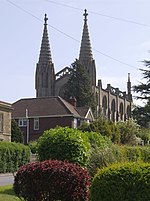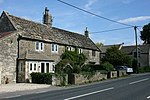Tellisford Mill
Buildings and structures in Mendip DistrictEnergy infrastructure completed in 1895Energy infrastructure completed in 2007FromeHydroelectric power stations in England ... and 3 more
Mill museums in EnglandRun-of-the-river power stationsWatermills in Somerset

Tellisford Mill is a 55 kilowatts (74 hp) installed capacity micro hydro run-of-the-river power station on the site of a former watermill in the village of Tellisford in the Mendip district of Somerset, England. The mill lies on the River Frome, 5+1⁄2 miles (9 km) north-east of the town of Frome. Part of the Mendip Power Group, the mill was restored to power in April 2007 using a German-made 55 kW vertically mounted Kaplan turbine, which is expected to produce on average 270 megawatt-hours (970 GJ) per year. The turbine replaced a 6 kW (8.0 hp) Francis turbine built in 1895.Tellisford Mill is also home to a photographic studio.
Excerpt from the Wikipedia article Tellisford Mill (License: CC BY-SA 3.0, Authors, Images).Tellisford Mill
Rode Hill, Mendip
Geographical coordinates (GPS) Address External links Nearby Places Show on map
Geographical coordinates (GPS)
| Latitude | Longitude |
|---|---|
| N 51.2999 ° | E -2.2806 ° |
Address
Tellisford Mill
Rode Hill
BA11 6AG Mendip
England, United Kingdom
Open on Google Maps









